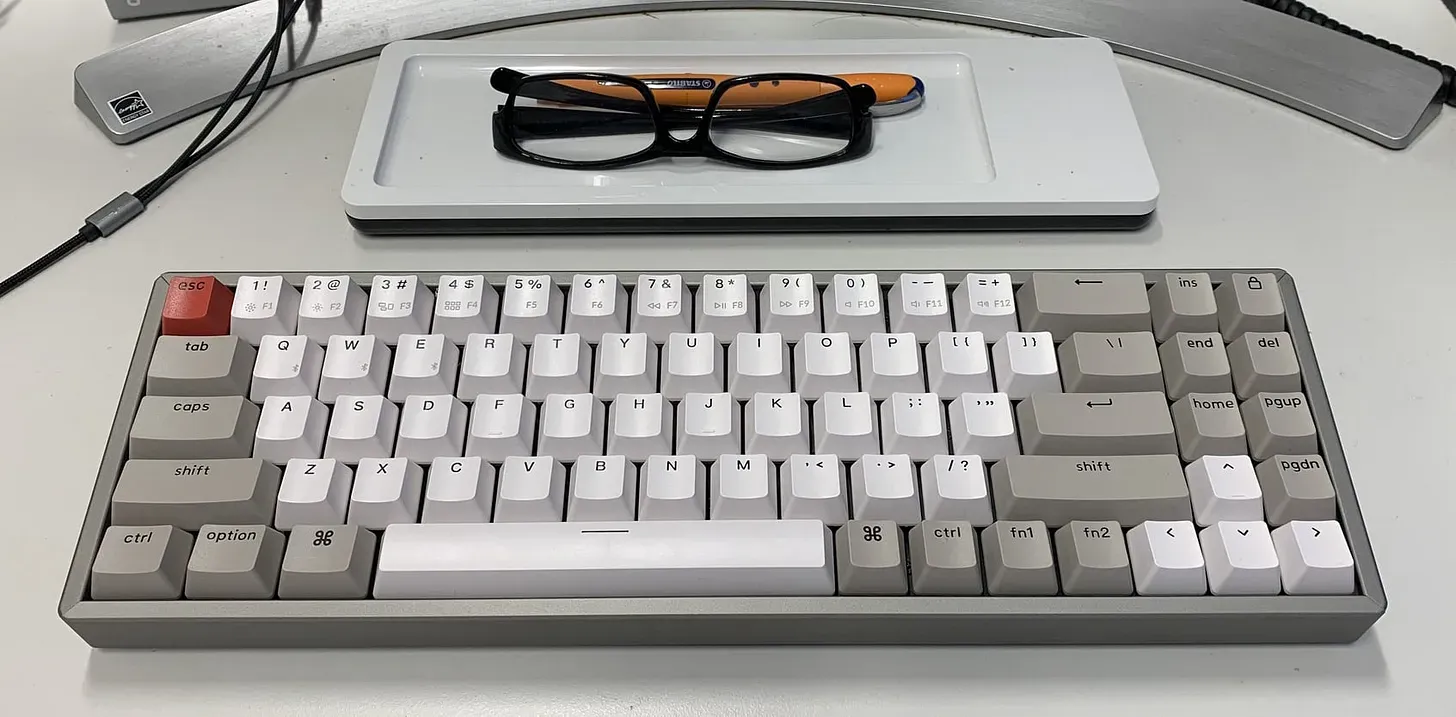On keyboards with mechanical switches
The 1992 IBM Model M was a robust and satisfying programming and typing keyboard, but became outdated due to lack of modern functions and a bulky design. Contemporary keyboards like the KEYCHRON K14 have reintroduced mechanical keys.

The best keyboard for programming and typing was an IBM Model M keyboard from 1992. I used this keyboard throughout my entire time at the university and during the first ten years of my professional career. Since the keyboard uses a PS/2 connector, I had to use at some point a PS/2-to-USB adapter to make use of it. Also, it is interesting to mention that the keyboard weighed 2 kg—meaning it was undestroyable.
Besides, it was loud, thanks to its mechanical keys. It gives you the feeling that you get serious work done. The main reason why the keyboard is loud is that it uses a buckling spring mechanism, with a spring inside each key that buckles as you press it. The buckling spring also gives the keyboard its distinctive feel—the keys offer fairly significant resistance up top a point, and then they go all way down. This is also precisely the moment they activate, so you know exactly when you have typed a letter by touch alone.
But with the years, more and more state-of-the-art functionality was missing. It is not easily possible to connect the keyboard via Bluetooth—a cable is always required. Another problem is that new and unique function keys are missing. Indeed, you can rearrange keys since key caps on most keys can be removed, but in the end, this workaround would be a false compromise. Another issue is that you always need an active switching element to connect the keyboard to two or more computer systems. Last, compact layouts are not available, so it always occupies space on your desk. At some point, I decided not to use the Type M keyboard anymore, even if it provides the best typing experience.
The good thing is that more and more keyboard manufacturers are going back to the original mechanical keys and offering state-of-the-art functionality.
The KEYCHRON K14 is one example. You can multitask seamlessly by connecting up to three devices. Rechargeable via USB-C—lasting up to two months. It also uses a 70% layout that retains all essential input of a tenkeyless keyboard but is 22% smaller.
More important, it gives me back the excellent typing experience I had with the Type M model many years ago.
